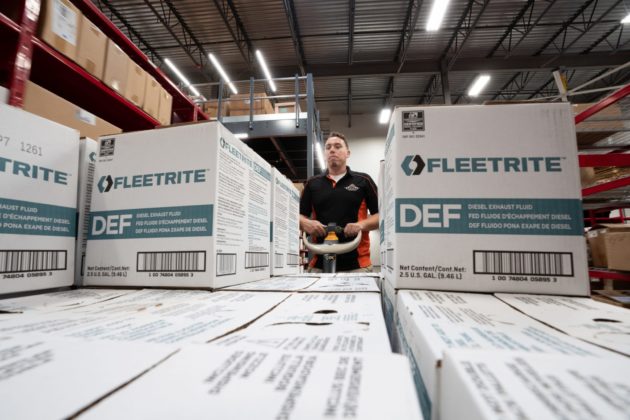Navistar lays out plan to grow parts business
BOULDER, Col. – Navistar International plans to grow its parts business, by expanding product lines within its private label brands and quickly adapting to a rapidly evolving market.
Josef Kory, senior vice-president of parts with Navistar, outlined the company’s objectives during a press event here today.
“For any OEM to be successful in growing revenue in their parts business, they have to offer solutions that span the life-cycle of the vehicle,” Kory said. “They have to appeal to the first owners and any subsequent owners of the vehicle.”
Navistar plans to expand the product lines available through its Fleetrite and Renewed private label brands.
“We continue to add product lines to each of these brands,” Kory said.
Fleetrite consists of a line of aftermarket parts products, aimed at lower total cost of ownership for first and subsequent truck owners, while Renewed offers remanufactured products. Fleetrite turns 50 in September and Navistar is looking to make the brand more prominent, by encouraging International dealers to open more standalone retail locations, especially in markets that are too small to merit the opening of a full-scale International dealership.
Fleetrite has seen double-digit growth over the past five years and now boasts 96 product lines. The standalone stores are designed to satisfy customers who believe the OEM dealerships are too expensive when it comes to parts replacement. Four new stores have been opened with “many more in the planning process,” Kory said. “Expect significant growth in these Fleetrite stores over the course of the next 12 months,” he added.
Navistar also made its products and services more widely available through a joint partnership with Love’s and Speedco. Customers can now bring their trucks there for service, including warranty work under three hours. This has added 500 service bays and 1,300 technicians to the Navistar network, creating what it claims is the largest service network in the North American commercial vehicle industry.
A new Memphis distribution center is also helping to improve parts sales. Dealers can order parts up until 11 p.m. and receive them the next day, thanks to the DC’s proximity to FedEx.
Kory detailed 10 trends he sees shaping the parts business:
- “For the next several years, uptime and total cost of ownership will be the primary focus for parts providers,” he said. “Those who are the easiest to do business with will win.”
- Customer expectations will be based on the world around them. “Customer expectations will be shaped by every other experience they have in the marketplace,” Kory said. If Amazon can ship items the same day, that expectation will carry over to parts suppliers.
- “The network of the future is going to need more, smaller distribution points,” said Kory. Look for smaller facilities, located closer to customers, making more frequent deliveries.
- “We’re going to need more ways to get parts to customers same-day and multiple times per day,” Kory said. He noted Navistar is experimenting with parts delivery via ride-sharing service Lyft.
- Parts inventory systems will use analytics, telematics, and artificial intelligence to predict what parts will be needed and where, and will stock them accordingly, Kory predicted. Historical demand will no longer be used to forecast future parts demand.
- 3D printers will be used by all OEMs, especially on low-demand, hard to tool-up parts. “We will all have 3D printers in our distribution centers in the future.”
- Transportation patterns will evolve, with less truckload and LTL, and more dedicated and last-mile deliveries, to accommodate the smaller delivery locations that will exist.
- Customers will increasingly order parts through e-commerce. “All OEMs will need to be prepared if they’re going to compete with aftermarket competitors in the e-commerce space,” said Kory.
- Dealerships will transition to more scheduled repairs, where components are replaced before they fail. “Analytics will help drive that scheduled maintenance,” said Kory, adding the days of trucks showing up with broken parts will be largely in the past.
- The parts business will evolve with the more widespread adoption of safety and collision mitigation systems, autonomous trucks, and electrification. “It will shift the replacement parts business away from crash parts and sheet metal parts, to more electronics, sensors, cameras,” Kory predicted.
Have your say
This is a moderated forum. Comments will no longer be published unless they are accompanied by a first and last name and a verifiable email address. (Today's Trucking will not publish or share the email address.) Profane language and content deemed to be libelous, racist, or threatening in nature will not be published under any circumstances.
We are get layoff